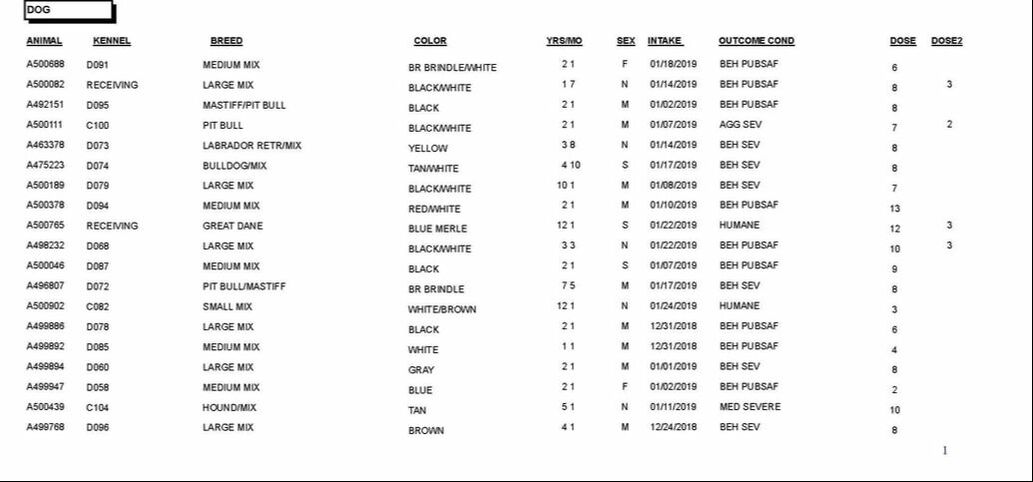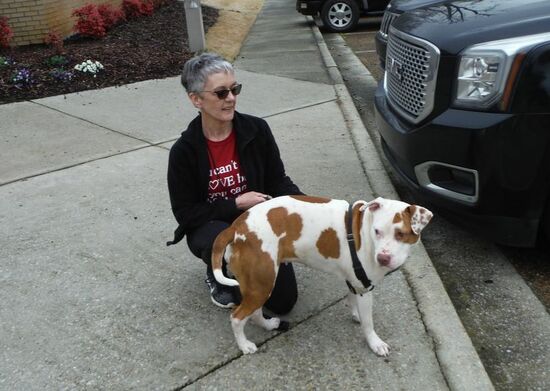|
I''m having a bad day. It relates to no kill principles, aggression in dogs, volunteering and a dog named Lulu. My head is not particularly clear, but I will share anyway so I can try to move on. I have written many times about the phrase "no kill" and what it means to me and the people in my circles. No kill is an animal sheltering philosophy in which healthy and treatable animals are not destroyed for space, for convenience or just because that is what has historically been done. Shelters which euthanize animals to alleviate suffering can still be no kill because they are doing what is ethical and right; no one would argue that animals should be kept alive if they are in pain or are so terribly injured that they simply cannot be saved. Shelters which destroy dogs who are genuinely dangerous for legal reasons related to public safety can also be no kill shelters. It is not reasonable to expect shelters to allow all dogs to be adopted out into our communities if those dogs may ultimately present a public safety risk and either injure or kill someone. I've dealt with legal cases about dog bite fatality attacks and they are both gruesome and preventable. Determining which dogs are actually dangerous is the tricky part. Although numerous dogs are destroyed in our nation’s animal shelters for behavioral issues which are categorized in a number of ways (fear, aggression, public safety and “high arousal”) experts have opined that shelter evaluations of dogs are no better than a coin toss and the number of dogs who are genuinely dangerous make up less than 1 percent of all shelter intake. Shelters are nothing at all like the homes or lives dogs may have known outside the shelter environment, even if that life was not good. As was stated in an article published by the National Canine Research Council: Shelter evaluations may tell us as much or more about the effect of the shelter as they do about the individual dogs. Shelters are noisy, alien environments, filled with strange smells, unfamiliar people, and dogs they may hear, but not see. We should not be surprised that some dogs may... behave differently when confined in a shelter, with its barrage of stressors that the dog cannot control, than they will in the safe, secure, predictable environment of a home, cared for by people with whom they are able to form positive attachments. I have known for a very long time that the shelter in the city where I work destroys large numbers of dogs for behavior. Some months are better than others. I get the reports from the city each month and I see the columns on the reports which set forth the identification number of each dog destroyed, the perceived breed, the age estimate and other details. The majority of the dogs are young. I, and members of my no kill advocacy group, have tried to get the city help on this issue. We've helped pay for experts to train the shelter staff. We've tried to connect the senior shelter staff with people in other places who can provide guidance and make recommendations on how to keep more dogs alive. There is only so much we can do because we lack any real influence to make things change for the better. Even though I know about dogs being destroyed, I decided the time had come to volunteer at the shelter. I refused to volunteer for years during the period when large numbers of healthy and treatable animals were destroyed. My position was that I would no sooner volunteer at a kill shelter than I would work the production line at a chicken processing plant. Because the city has made a lot of progress - and because it is the city's position that it has not destroyed any dogs for space or convenience for four years - I decided the time had come to give it a shot. I have never given any value to the opinion of my many critics over the years who have professed that I am not allowed to have an opinion about what happens at the shelter unless I volunteer there (as if volunteering is the Golden Ticket to free speech). I can absolutely have an opinion about how tax dollars are spent, But I was spending less time on political advocacy locally so I told myself that I could spend some time volunteering instead. I volunteered at the shelter for a few months and admit that I enjoyed it even though my advocacy has marked me as the enemy in the minds of some. It was nice to take my lunch break, put on some jeans and and old pair of tennis shoes and go walk dogs, engage with dogs and feed them special treats. I did a fundraiser to help the shelter buy some great slip leads and leashes. I created posters to help promote donation of toys and treats. I began making short promotional videos for some dogs to help market them with the public. One day a couple of weeks ago I met a singer/songwriter friend of mine at the shelter as she performed "shelter serenades" while I took some video footage. I fully admit that my time at the shelter was not a big deal in terms of the overall need. My hour or so a week was not a huge contribution, but I wanted to do something and I felt like I was helping in some way even though I was not welcome at the shelter by many of the other volunteers. It did not last.
On Friday I met a dog named Lulu. I had seem images of her on social media used to help promote her on Valentine's Day. One was of her wearing beads and a headband with hearts on it; I remember thinking to myself that not many dogs would tolerate having that much "stuff" put on them and then actually sit still for photographs. I knew from contacts that Lulu had been showing signs of stress inside the shelter. On the day I met her, a volunteer had taken LuLu outside for a walk. I talked to Lulu, touched her, took some photos and recorded her walking nicely on a leash so I could make a short promotional video to help her get adopted. She was happy. She was calm. I learned later that afternoon that she had lunged at her kennel door when meeting a potential adopter and had tried to bite a volunteer. I finished the video of her and shared it with others on Monday, hoping someone would see it and decide to adopt her or foster her. I was sure that if she could be introduced to someone not inside the shelter, but outside, she may have a chance to be placed. I've seen dogs who were incredibly stressed inside shelters change completely once they are no longer confined in that environment. One woman did offer to foster her. But it did not matter. I found out today that Lulu was killed yesterday. Some of the words used to explain the decision were, "she had become unsafe" and "we were worried about her potential for harming people." I appreciate the fact that some dogs are broken and are unsafe. I do not think we can "save them all." I do think we can save almost all of them and that it takes a commitment to try everything before we give up. We need to look for every opportunity to keep the dogs who are struggling the most alive. A foster home. Housing the dog outside in a kennel for a few hours a day to get them out of the shelter building itself. Working with a contract behaviorist. I have a hard time reconciling the image of the happy dog wearing beads and my memories of the dog walking calmly on a leash with a decision to end her life three days later. Grief makes no sense. I will grieve for the dog named Lulu whom I just met not only because she is gone but because she represents so many other dogs just like her. I'm sorry we failed you, Lulu. You were beautiful. You were smart. And this image of you is forever seared in my memory.
2 Comments
|
AuthorI am an animal welfare advocate. My goal is to help people understand some basic issues related to companion animals in America. Awareness leads to education leads to action leads to change. Archives
July 2024
Categories
All
image courtesy of Terrah Johnson
|



 RSS Feed
RSS Feed